Ambient
Showing 26851–26900 of 55601 results
-
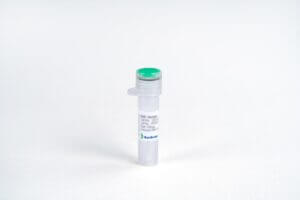
IFN-β, Human
$43.13 Add to cart View Product DetailsInterferon-beta (IFN-β), acting via STAT1 and STAT2, is known to upregulate and downregulate a wide variety of genes, most of which are involved in the antiviral immune response. It is a member of Type I IFNs, which include IFN-α, -β, τ, and –ω. IFN-β plays an important role in inducing non-specific resistance against a broad range of viral infections. It also affects cell proliferation and modulates immune responses.
-

IFN-γ R II, Human
$63.83 Add to cart View Product DetailsIFN-gamma Receptor II, also known as IFNGR2 and IFNGT1, is a transmembrane protein belonging to the type II cytokine receptor family. IFNGR2 is a non-ligand-binding beta chain of the IFN-gamma receptor. It is an integral part of the IFN-gamma signaling transduction pathway and is likely to interact with GAF, JAK1 and JAK2. Defects in IFNGR2 are a cause of autosomal recessive Mendelian susceptibility to mycobacterial disease (MSMD), also known as familial disseminated atypical mycobacterial infection.
-

IFN-γ R II, Human
$133.69 Add to cart View Product DetailsIFN-gamma Receptor II, also known as IFNGR2 and IFNGT1, is a transmembrane protein belonging to the type II cytokine receptor family. IFNGR2 is a non-ligand-binding beta chain of the IFN-gamma receptor. It is an integral part of the IFN-gamma signaling transduction pathway and is likely to interact with GAF, JAK1 and JAK2. Defects in IFNGR2 are a cause of autosomal recessive Mendelian susceptibility to mycobacterial disease (MSMD), also known as familial disseminated atypical mycobacterial infection.
-
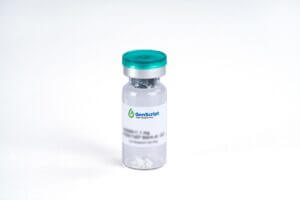
IFN-γ, Human
$487.31 Add to cart View Product DetailsHuman Interferon gamma (hIFN-γ) is amacrophage‐activating factor and the lone member of Interferon type II.The active form of IFN-γ is an antiparallel dimer that interacts with the receptor IFN-γR1 and sets off IFN-γ/JAK/STAT pathway. IFN-γ signaling does diverse biological functions primarily related to host defense and immune regulation, including antiviral and antibacterial defense, apoptosis, inflammation, and innate and acquired immunity. While IFN-γ–induced inflammatory cascade summons a variety of immune‐related cell types, such as macrophages, natural killer (NK) cells and cytotoxic T lymphocytes (CTLs), IFN-γ is also implicated in resistance to NK cell and CTL responses and in immune escape in a variety of cancers.
-

IFN-γ, Human
$34.50 Add to cart View Product DetailsHuman Interferon gamma (hIFN-γ) is amacrophage‐activating factor and the lone member of Interferon type II.The active form of IFN-γ is an antiparallel dimer that interacts with the receptor IFN-γR1 and sets off IFN-γ/JAK/STAT pathway. IFN-γ signaling does diverse biological functions primarily related to host defense and immune regulation, including antiviral and antibacterial defense, apoptosis, inflammation, and innate and acquired immunity. While IFN-γ–induced inflammatory cascade summons a variety of immune‐related cell types, such as macrophages, natural killer (NK) cells and cytotoxic T lymphocytes (CTLs), IFN-γ is also implicated in resistance to NK cell and CTL responses and in immune escape in a variety of cancers.
-

IFN-γ, Human
$99.19 Add to cart View Product DetailsHuman Interferon gamma (hIFN-γ) is amacrophage‐activating factor and the lone member of Interferon type II.The active form of IFN-γ is an antiparallel dimer that interacts with the receptor IFN-γR1 and sets off IFN-γ/JAK/STAT pathway. IFN-γ signaling does diverse biological functions primarily related to host defense and immune regulation, including antiviral and antibacterial defense, apoptosis, inflammation, and innate and acquired immunity. While IFN-γ–induced inflammatory cascade summons a variety of immune‐related cell types, such as macrophages, natural killer (NK) cells and cytotoxic T lymphocytes (CTLs), IFN-γ is also implicated in resistance to NK cell and CTL responses and in immune escape in a variety of cancers.
-

IFN-γ, Human
$72.45 Add to cart View Product DetailsHuman Interferon gamma (hIFN-γ) is amacrophage‐activating factor and the lone member of Interferon type II.The active form of IFN-γ is an antiparallel dimer that interacts with the receptor IFN-γR1 and sets off IFN-γ/JAK/STAT pathway. IFN-γ signaling does diverse biological functions primarily related to host defense and immune regulation, including antiviral and antibacterial defense, apoptosis, inflammation, and innate and acquired immunity. While IFN-γ–induced inflammatory cascade summons a variety of immune‐related cell types, such as macrophages, natural killer (NK) cells and cytotoxic T lymphocytes (CTLs), IFN-γ is also implicated in resistance to NK cell and CTL responses and in immune escape in a variety of cancers.
-

IFN-γ, Human(CHO-expressed)
$521.81 Add to cart View Product DetailsHuman Interferon gamma (hIFN-γ) is amacrophage-activating factor and the lone member of Interferon type II. The active form of IFN-γ is an antiparallel dimer that interacts with the receptor IFN-γR1 and sets off IFN-γ/JAK/STAT pathway. IFN-γ signaling does diverse biological functions primarily related to host defense and immune regulation, including antiviral and antibacterial defense, apoptosis, inflammation, and innate and acquired immunity. While IFN-γ–induced inflammatory cascade summons a variety of immune-related cell types, such as macrophages, natural killer (NK) cells and cytotoxic T lymphocytes (CTLs), IFN-γ is also implicated in resistance to NK cell and CTL responses and in immune escape in a variety of cancers.
-

IFN-γ, Human(CHO-expressed)
$36.23 Add to cart View Product DetailsHuman Interferon gamma (hIFN-γ) is amacrophage-activating factor and the lone member of Interferon type II. The active form of IFN-γ is an antiparallel dimer that interacts with the receptor IFN-γR1 and sets off IFN-γ/JAK/STAT pathway. IFN-γ signaling does diverse biological functions primarily related to host defense and immune regulation, including antiviral and antibacterial defense, apoptosis, inflammation, and innate and acquired immunity. While IFN-γ–induced inflammatory cascade summons a variety of immune-related cell types, such as macrophages, natural killer (NK) cells and cytotoxic T lymphocytes (CTLs), IFN-γ is also implicated in resistance to NK cell and CTL responses and in immune escape in a variety of cancers.
-

IFN-γ, Human(CHO-expressed)
$76.76 Add to cart View Product DetailsHuman Interferon gamma (hIFN-γ) is amacrophage-activating factor and the lone member of Interferon type II. The active form of IFN-γ is an antiparallel dimer that interacts with the receptor IFN-γR1 and sets off IFN-γ/JAK/STAT pathway. IFN-γ signaling does diverse biological functions primarily related to host defense and immune regulation, including antiviral and antibacterial defense, apoptosis, inflammation, and innate and acquired immunity. While IFN-γ–induced inflammatory cascade summons a variety of immune-related cell types, such as macrophages, natural killer (NK) cells and cytotoxic T lymphocytes (CTLs), IFN-γ is also implicated in resistance to NK cell and CTL responses and in immune escape in a variety of cancers.
-

IFN-γ, Mouse
$414.00 Add to cart View Product DetailsSharing 41% sequence identity with human Interferon gamma (hIFN–γ), mouse IFN gamma (mIFN–γ)is a macrophage-activating factor.The active form of IFN–γ is an antiparallel dimer that sets off IFN–γ/JAK/STAT pathway. IFN–γ signaling does diverse biological functions primarily related to host defense and immune regulation, including antiviral and antibacterial defense, apoptosis, inflammation, and innate and acquired immunity.While IFN–γ–induced inflammatory cascade summons a variety of immune-related cell types, such as macrophages, natural killer (NK) cells and cytotoxic T lymphocytes (CTLs), IFN–γ is also implicated in resistance to NK cell and CTL responses and in immune escape in avariety of cancers.
-

IFN-γ, Mouse
$86.25 Add to cart View Product DetailsSharing 41% sequence identity with human Interferon gamma (hIFN–γ), mouse IFN gamma (mIFN–γ)is a macrophage-activating factor.The active form of IFN–γ is an antiparallel dimer that sets off IFN–γ/JAK/STAT pathway. IFN–γ signaling does diverse biological functions primarily related to host defense and immune regulation, including antiviral and antibacterial defense, apoptosis, inflammation, and innate and acquired immunity.While IFN–γ–induced inflammatory cascade summons a variety of immune-related cell types, such as macrophages, natural killer (NK) cells and cytotoxic T lymphocytes (CTLs), IFN–γ is also implicated in resistance to NK cell and CTL responses and in immune escape in avariety of cancers.
-

IFN-γ, Mouse
$43.13 Add to cart View Product DetailsSharing 41% sequence identity with human Interferon gamma (hIFN–γ), mouse IFN gamma (mIFN–γ)is a macrophage-activating factor.The active form of IFN–γ is an antiparallel dimer that sets off IFN–γ/JAK/STAT pathway. IFN–γ signaling does diverse biological functions primarily related to host defense and immune regulation, including antiviral and antibacterial defense, apoptosis, inflammation, and innate and acquired immunity.While IFN–γ–induced inflammatory cascade summons a variety of immune-related cell types, such as macrophages, natural killer (NK) cells and cytotoxic T lymphocytes (CTLs), IFN–γ is also implicated in resistance to NK cell and CTL responses and in immune escape in avariety of cancers.
-

IFN-γ, Mouse
$280.31 Add to cart View Product DetailsSharing 41% sequence identity with human Interferon gamma (hIFN–γ), mouse IFN gamma (mIFN–γ)is a macrophage-activating factor.The active form of IFN–γ is an antiparallel dimer that sets off IFN–γ/JAK/STAT pathway. IFN–γ signaling does diverse biological functions primarily related to host defense and immune regulation, including antiviral and antibacterial defense, apoptosis, inflammation, and innate and acquired immunity.While IFN–γ–induced inflammatory cascade summons a variety of immune-related cell types, such as macrophages, natural killer (NK) cells and cytotoxic T lymphocytes (CTLs), IFN–γ is also implicated in resistance to NK cell and CTL responses and in immune escape in avariety of cancers.
-
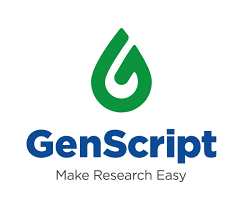
IFN-γ, Rat
$836.63 Add to cart View Product DetailsInterferon-gamma (IFN-γ), also known as Type II interferon or immune interferon, is a cytokine produced primarily by T-lymphocytes and natural killer cells. The protein shares no significant homology with IFN-β or the various IFN-α family proteins. Mature IFN-γ exists as noncovalently-linked homodimers. It shares high sequence indentity with mouse IFN-γ (86 %). IFN-γ was originally characterized based on its antiviral activities. The protein also exerts antiproliferative, immunoregulatory and proinflammatory activities and is thus important in host defense mechanisms. IFN-γ induces the production of cytokines, upregulates the expression of class I and II MHC antigens, Fc receptor and leukocyte adhesion molecules. It modulates macrophage effector functions, influences isotype switching and potentiates the secretion of immunoglobulins by B cells. Additionally, IFN-γ augments TH1 cell expansion and may be required for TH1 cell differentiation.
-

IFN-γ, Rat
$163.88 Add to cart View Product DetailsInterferon-gamma (IFN-γ), also known as Type II interferon or immune interferon, is a cytokine produced primarily by T-lymphocytes and natural killer cells. The protein shares no significant homology with IFN-β or the various IFN-α family proteins. Mature IFN-γ exists as noncovalently-linked homodimers. It shares high sequence indentity with mouse IFN-γ (86 %). IFN-γ was originally characterized based on its antiviral activities. The protein also exerts antiproliferative, immunoregulatory and proinflammatory activities and is thus important in host defense mechanisms. IFN-γ induces the production of cytokines, upregulates the expression of class I and II MHC antigens, Fc receptor and leukocyte adhesion molecules. It modulates macrophage effector functions, influences isotype switching and potentiates the secretion of immunoglobulins by B cells. Additionally, IFN-γ augments TH1 cell expansion and may be required for TH1 cell differentiation.
-

IFN-γ, Rat (CHO-expressed)
$521.81 Add to cart View Product DetailsInterferon-γ (IFN-γ), also known as Type II interferon or immune interferon, is a cytokine produced primarily by T-lymphocytes and natural killer cells. The active form of IFN-γ is an antiparallel dimer that interacts with the receptor IFN-γR1 and sets off IFN-γ/JAK/STAT pathway. IFN-γ signaling does diverse biological functions primarily related to host defense and immune regulation, including antiviral and antibacterial defense, apoptosis, inflammation, and innate and acquired immunity. While IFN-γ–induced inflammatory cascade summons a variety of immune-related cell types, such as macrophages, natural killer (NK) cells and cytotoxic T lymphocytes (CTLs), IFN-γ is also implicated in resistance to NK cell and CTL responses and in immune escape in a variety of cancers.
-

IFN-γ, Rat (CHO-expressed)
$36.23 Add to cart View Product DetailsInterferon-γ (IFN-γ), also known as Type II interferon or immune interferon, is a cytokine produced primarily by T-lymphocytes and natural killer cells. The active form of IFN-γ is an antiparallel dimer that interacts with the receptor IFN-γR1 and sets off IFN-γ/JAK/STAT pathway. IFN-γ signaling does diverse biological functions primarily related to host defense and immune regulation, including antiviral and antibacterial defense, apoptosis, inflammation, and innate and acquired immunity. While IFN-γ–induced inflammatory cascade summons a variety of immune-related cell types, such as macrophages, natural killer (NK) cells and cytotoxic T lymphocytes (CTLs), IFN-γ is also implicated in resistance to NK cell and CTL responses and in immune escape in a variety of cancers.
-

IFN-γ, Rat (CHO-expressed)
$76.76 Add to cart View Product DetailsInterferon-γ (IFN-γ), also known as Type II interferon or immune interferon, is a cytokine produced primarily by T-lymphocytes and natural killer cells. The active form of IFN-γ is an antiparallel dimer that interacts with the receptor IFN-γR1 and sets off IFN-γ/JAK/STAT pathway. IFN-γ signaling does diverse biological functions primarily related to host defense and immune regulation, including antiviral and antibacterial defense, apoptosis, inflammation, and innate and acquired immunity. While IFN-γ–induced inflammatory cascade summons a variety of immune-related cell types, such as macrophages, natural killer (NK) cells and cytotoxic T lymphocytes (CTLs), IFN-γ is also implicated in resistance to NK cell and CTL responses and in immune escape in a variety of cancers.
-

IFN-λ1, Human
$2,018.25 Add to cart View Product DetailsIL-28A, IL-28B, and IL-29, also named interferon-λ2 (IFN-λ2), IFN-λ3, and IFN-λ1, respectively, are newly identified class II cytokine receptor ligands that are distantly related to members of the IL-10 family (11-13% aa sequence identity) and the type I IFN family (15-19% aa sequence identity). The expression of IL-28A, B, and IL-29 is induced by virus infection or double-stranded RNA. All three cytokines exert bioactivities that overlap those of type I IFNs, including antiviral activity and up-regulation of MHC class I antigen expression. The three proteins signal through the same heterodimeric receptor complex that is composed of the IL-10 receptor β (IL-10 Rβ) and a novel IL-28 receptor α (IL-28 Rα, also known as IFN-λR1). Ligand binding to the receptor complex induces Jak kinase activation and STAT1 and STAT2 tyrosine phosphorylation.
-

IFN-λ1, Human
$155.25 Add to cart View Product DetailsIL-28A, IL-28B, and IL-29, also named interferon-λ2 (IFN-λ2), IFN-λ3, and IFN-λ1, respectively, are newly identified class II cytokine receptor ligands that are distantly related to members of the IL-10 family (11-13% aa sequence identity) and the type I IFN family (15-19% aa sequence identity). The expression of IL-28A, B, and IL-29 is induced by virus infection or double-stranded RNA. All three cytokines exert bioactivities that overlap those of type I IFNs, including antiviral activity and up-regulation of MHC class I antigen expression. The three proteins signal through the same heterodimeric receptor complex that is composed of the IL-10 receptor β (IL-10 Rβ) and a novel IL-28 receptor α (IL-28 Rα, also known as IFN-λR1). Ligand binding to the receptor complex induces Jak kinase activation and STAT1 and STAT2 tyrosine phosphorylation.
-

IFN-ω, Human
$68.14 Add to cart View Product DetailsInterferon-Omega (IFN-ω) coded by IFNW1 gene in human, is a number of the type I interferon family, which includes IFN-a, IFN-β, and IFN-ω. The IFNAR-1/IFNAR-2 receptor complex can help with the signal transduction, followed the antiviral or the antiproliferative actions. IFN-ω is derived from IFN-a/β and share 75% sequence with IFN-a. It has two intramolecular disulfide bonds which are crucial for activities. Mire-Sluis et al have described bioassays for IFN-α, IFN-β, and IFN-ω that exploit the ability of these factors to inhibit proliferation of TF-1 cells induced by GM-CSF. The bioassays can be used also with Epo and TF-1 cells, or Epo and Epo-transfected UT-7 cells.
-
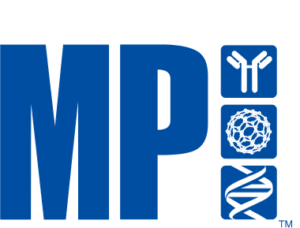
Ifosfamide, NeuroPure
$79.34 Add to cart View Product DetailsIfosfamide, NeuroPure
-

Ifosfamide, NeuroPure
$293.18 Add to cart View Product DetailsIfosfamide, NeuroPure
-
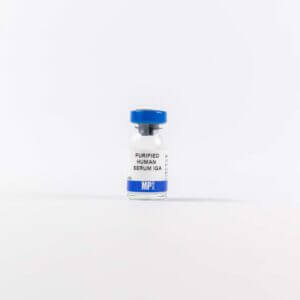
IgA, human serum , purified
$478.10 Add to cart View Product DetailsLyophilized human serum IgA with buffers and salts.
-

IgA(alpha chain), anti-human
$87.11 Add to cart View Product DetailsLyophilized goat antibody to human IgA (alpha chain)
-

Igepal(R) CA-630
$124.30 Add to cart View Product DetailsIgepal(R) CA-630
-

Igepal(R) CA-630
$140.13 Add to cart View Product DetailsIgepal(R) CA-630
-

Igepal(R) CA-630
$353.61 Add to cart View Product DetailsIgepal(R) CA-630
-

Igepal(R) CA-720
$56.60 Add to cart View Product DetailsIgepal(R) CA-720
-

Igepal(R) CA-720
$173.94 Add to cart View Product DetailsIgepal(R) CA-720
-

Igepal(R) CO-520
$14,737.41 Add to cart View Product DetailsIgepal(R) CO-520
-

Igepal® ca-630
$32.83 Add to cart View Product DetailsIgepal® Ca-630
-

Igepal® ca-630
$50.37 Add to cart View Product DetailsNonionic non-denaturing detergent. For solubilizing membrane proteins. Chemically indistinguishable from Nonidet P-40
-

Igepal® ca-630
$119.22 Add to cart View Product DetailsIgepal® Ca-630
-

IGF-BP-2, His, Human
$1,863.00 Add to cart View Product DetailsIGF-BP-2, also known as Insulin-like growth factor-binding protein 2, IBP-2 and BP-2, is a cysteine-rich secreted protein belonging to the IGF-binding protein superfamily. It is expressed by the central nervous system, bone cells and reproductive tissues. IGF-BP-2 binds to both IGF-I and IGF-II, with a much higher binding affinity to IGF-II than IGF-I. IGF-BP-2 has been shown to inhibitand stimulate the growth promoting effects of IGFs, thus serving as a regulator for IGF distribution, function and activity.
-

IGF-BP-2, His, Human
$51.75 Add to cart View Product DetailsIGF-BP-2, also known as Insulin-like growth factor-binding protein 2, IBP-2 and BP-2, is a cysteine-rich secreted protein belonging to the IGF-binding protein superfamily. It is expressed by the central nervous system, bone cells and reproductive tissues. IGF-BP-2 binds to both IGF-I and IGF-II, with a much higher binding affinity to IGF-II than IGF-I. IGF-BP-2 has been shown to inhibitand stimulate the growth promoting effects of IGFs, thus serving as a regulator for IGF distribution, function and activity.
-

IGF-BP-2, His, Human
$224.25 Add to cart View Product DetailsIGF-BP-2, also known as Insulin-like growth factor-binding protein 2, IBP-2 and BP-2, is a cysteine-rich secreted protein belonging to the IGF-binding protein superfamily. It is expressed by the central nervous system, bone cells and reproductive tissues. IGF-BP-2 binds to both IGF-I and IGF-II, with a much higher binding affinity to IGF-II than IGF-I. IGF-BP-2 has been shown to inhibitand stimulate the growth promoting effects of IGFs, thus serving as a regulator for IGF distribution, function and activity.
-

IGF-BP-3, Human
$2,018.25 Add to cart View Product DetailsIGF-BP3 is a 30 kDa cysteine-rich secreted protein. It is the major IGF binding protein present in the plasma of human and animals and it is also found in α-granules of platelets. In addition to its ability to modulate the activity of IGF-I and IGF-II, IGF-BP3 exerts inhibitory effects on follicle stimulating hormone (FSH) activity. Decreased plasma levels of IGF-BP3 often results in dwarfism, whereas elevated levels of IGF-BP3 may lead to acromegaly. The expression of IGF-BP3 in fibroblasts is stimulated by mitogenic growth factors such as Bombesin, Vasopressin, PDGF, and EGF.
-

IGF-BP-3, Human
$155.25 Add to cart View Product DetailsIGF-BP3 is a 30 kDa cysteine-rich secreted protein. It is the major IGF binding protein present in the plasma of human and animals and it is also found in α-granules of platelets. In addition to its ability to modulate the activity of IGF-I and IGF-II, IGF-BP3 exerts inhibitory effects on follicle stimulating hormone (FSH) activity. Decreased plasma levels of IGF-BP3 often results in dwarfism, whereas elevated levels of IGF-BP3 may lead to acromegaly. The expression of IGF-BP3 in fibroblasts is stimulated by mitogenic growth factors such as Bombesin, Vasopressin, PDGF, and EGF.
-

IGF-BP-4, His, Human
$1,863.00 Add to cart View Product DetailsInsulin-like growth factor-binding protein 4 (IGF-BP-4), also known as IBP-4, is a secreted glycoprotein belonging to the IGFBP family. IGF-BP-4 is produced by osteoblasts, epidermis, ovarian follicles and other tissues. It binds both insulin-like growth factor (IGF) I and II, and it circulates in the plasma in both glycosylated and non-glycosylated forms. IGF-BP-4 prolongs the half-life of the IGFs and has been shown to inhibit or stimulate the growth-promoting effects of the IGFs. Pregnancy Associated Plasma Protein A (PAPP-A) proteolytically cleaves IGF-BP-4 and reduces its affinity to bind IGFs, and thus serves as an important regulator of IGF-BP-4 function.
-

IGF-BP-4, His, Human
$51.75 Add to cart View Product DetailsInsulin-like growth factor-binding protein 4 (IGF-BP-4), also known as IBP-4, is a secreted glycoprotein belonging to the IGFBP family. IGF-BP-4 is produced by osteoblasts, epidermis, ovarian follicles and other tissues. It binds both insulin-like growth factor (IGF) I and II, and it circulates in the plasma in both glycosylated and non-glycosylated forms. IGF-BP-4 prolongs the half-life of the IGFs and has been shown to inhibit or stimulate the growth-promoting effects of the IGFs. Pregnancy Associated Plasma Protein A (PAPP-A) proteolytically cleaves IGF-BP-4 and reduces its affinity to bind IGFs, and thus serves as an important regulator of IGF-BP-4 function.
-

IGF-BP-4, His, Human
$224.25 Add to cart View Product DetailsInsulin-like growth factor-binding protein 4 (IGF-BP-4), also known as IBP-4, is a secreted glycoprotein belonging to the IGFBP family. IGF-BP-4 is produced by osteoblasts, epidermis, ovarian follicles and other tissues. It binds both insulin-like growth factor (IGF) I and II, and it circulates in the plasma in both glycosylated and non-glycosylated forms. IGF-BP-4 prolongs the half-life of the IGFs and has been shown to inhibit or stimulate the growth-promoting effects of the IGFs. Pregnancy Associated Plasma Protein A (PAPP-A) proteolytically cleaves IGF-BP-4 and reduces its affinity to bind IGFs, and thus serves as an important regulator of IGF-BP-4 function.
-

IGF-I, Bovine
$120.75 Add to cart View Product DetailsInsulin-like growth factor 1 (IGF-1), also called Somatomedin, is a hormone similar in molecular structure to insulin but has a much higher growth-promoting activity. IGF-1 consists of 70 amino acids in a single chain with three intramolecular disulfide bridges. IGF-1 may be a physiological regulator of [1-14C]-2-deoxy-D-glucose (2DG) transport and glycogen synthesis in osteoblasts. It is able to stimulate glucose transport in bone-derived osteoblastic (PyMS) cells and is effective at much lower concentrations than insulin, not only regarding glycogen and DNA synthesis but also with regard to enhancing glucose uptake. It may also play a role in synapse maturation.
-

IGF-I, Bovine
$43.13 Add to cart View Product DetailsInsulin-like growth factor 1 (IGF-1), also called Somatomedin, is a hormone similar in molecular structure to insulin but has a much higher growth-promoting activity. IGF-1 consists of 70 amino acids in a single chain with three intramolecular disulfide bridges. IGF-1 may be a physiological regulator of [1-14C]-2-deoxy-D-glucose (2DG) transport and glycogen synthesis in osteoblasts. It is able to stimulate glucose transport in bone-derived osteoblastic (PyMS) cells and is effective at much lower concentrations than insulin, not only regarding glycogen and DNA synthesis but also with regard to enhancing glucose uptake. It may also play a role in synapse maturation.
-

IGF-I, Bovine
$76.76 Add to cart View Product DetailsInsulin-like growth factor 1 (IGF-1), also called Somatomedin, is a hormone similar in molecular structure to insulin but has a much higher growth-promoting activity. IGF-1 consists of 70 amino acids in a single chain with three intramolecular disulfide bridges. IGF-1 may be a physiological regulator of [1-14C]-2-deoxy-D-glucose (2DG) transport and glycogen synthesis in osteoblasts. It is able to stimulate glucose transport in bone-derived osteoblastic (PyMS) cells and is effective at much lower concentrations than insulin, not only regarding glycogen and DNA synthesis but also with regard to enhancing glucose uptake. It may also play a role in synapse maturation.
-
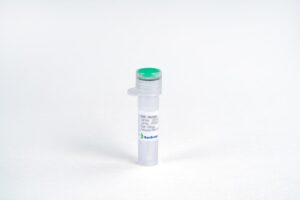
IGF-I, Human
$120.75 Add to cart View Product DetailsInsulin-like growth factor I (IGF-I) also known as Somatamedin C is a hormone similar in molecular structure to insulin. Human IGF-I has two isoforms (IGF-IA and IGF-IB) which are differentially expressed by various tissues. Mature human IGF-I shares 94% and 96% aa sequence identity with mouse and rat IGF-I, respectively. Both IGF-I and IGF-II (another ligand of IGF) can signal through the IGF-I receptor (IGFIR), but only IGF-II can bind the IGF-II receptor (IGFIIR/ Mannose-6-phosphate receptor). IGF-I plays an important role in childhood growth and continues to have anabolic effects in adults.
-

IGF-I, Human
$43.13 Add to cart View Product DetailsInsulin-like growth factor I (IGF-I) also known as Somatamedin C is a hormone similar in molecular structure to insulin. Human IGF-I has two isoforms (IGF-IA and IGF-IB) which are differentially expressed by various tissues. Mature human IGF-I shares 94% and 96% aa sequence identity with mouse and rat IGF-I, respectively. Both IGF-I and IGF-II (another ligand of IGF) can signal through the IGF-I receptor (IGFIR), but only IGF-II can bind the IGF-II receptor (IGFIIR/ Mannose-6-phosphate receptor). IGF-I plays an important role in childhood growth and continues to have anabolic effects in adults.
-

IGF-I, Human
$76.76 Add to cart View Product DetailsInsulin-like growth factor I (IGF-I) also known as Somatamedin C is a hormone similar in molecular structure to insulin. Human IGF-I has two isoforms (IGF-IA and IGF-IB) which are differentially expressed by various tissues. Mature human IGF-I shares 94% and 96% aa sequence identity with mouse and rat IGF-I, respectively. Both IGF-I and IGF-II (another ligand of IGF) can signal through the IGF-I receptor (IGFIR), but only IGF-II can bind the IGF-II receptor (IGFIIR/ Mannose-6-phosphate receptor). IGF-I plays an important role in childhood growth and continues to have anabolic effects in adults.
-

IGF-I, Mouse
$612.38 Add to cart View Product DetailsInsulin-like Growth Factor I (IGF-I) is a single chain 7 kDa growth-promoting polypeptide originally identified as somatomedin-c. It belongs to the IGF family of peptides, which also includes IGF-II and insulin. The gene expression of IGF-I is mainly regulated by Growth Hormone, and IGF-I executes its functions via signaling through transmembrane tyrosine receptors (IGF Receptors). Most circulating IFG-I is associated with the IGF Binding Protein 3 (IGFBP-3), and the IGFBPs may inhibit the actions of IGFs by competing against the IGF Receptors. IGF-I is active in post-natal and adult animals, and is crucial for somatic growth, as IGF-I null mice show marked retardation in utero. IGF-I is involved in carcinogenesis, and related to prostate cancer as well.






